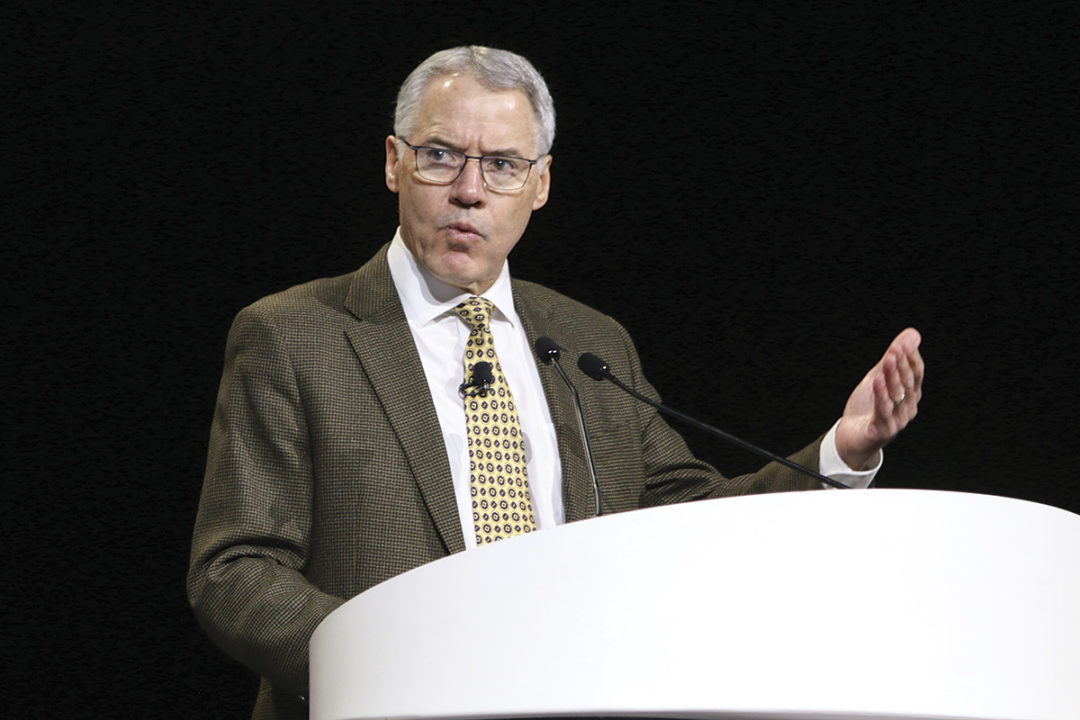Profitability for cattle producers – especially the cow-calf operator – is expected to improve to levels the industry hasn’t seen since 2013-15, according to CattleFax CEO Randy Blach.
During the National Cattlemen’s Beef Association’s (NCBA) annual convention in New Orleans on Feb. 2, Blach shared an overall positive outlook with attendees, explaining that tighter cattle numbers will continue to push prices higher. However, along with the optimism for the next several years, Blach also offered some words of caution.
“The one thing I do want to say to each and every one of you in the room is: You better be ready. With these kind of supply shocks that we are going to put into the market over the course of the next three to four years, we’re going to see unprecedented volatility,” Blach said, explaining as the market pushes higher, the price spreads between classes of cattle can widen significantly.
For the most part, Blach explained that the price spread has been relatively flat the past few years since the big spike a decade ago. Drought and a large feed supply has limited margin gains up to this point in all sectors, but improvements in the weather pattern and a tighter supply should distribute more money through all sectors of the cattle industry.
“You’re really going to need to pay attention,” Blach reiterated. “When these markets move, they are going to have significant moves. They’re going to create opportunities for you to lock in some solid profits on these different classes of cattle that you’re working through. But you’re really going to need to be attentive because these things are not going to be tamed.”
Tighter supplies will present challenges for several packing plants that have announced plans to construct or are in the process of construction. About a 4 million head reduction in total cattle slaughter is expected into 2025 and 2026. “That’s not going to be the most ideal timing for some of that capacity to come online,” Blach said.
Saturday slaughter is likely to be a thing of the past. Blach pointed out that from 2017 to 2022, about 35,000 to 50,000 fed cattle were harvested on Saturdays. This is equivalent to 1.75 million to 2.5 million head per year.
“I think sometimes we all forget how hard we had to run these harvest plants,” Blach said. “Now, I ask all of you in the room: If you had to vote today and make a guess, do you really expect that we’ll be able to keep these plants running on Saturday? Do we have the labor force that really wants to work on Saturdays? I don’t think so.”
Blach also highlighted the significant increase in the number of cattle that have been merchandised on a negotiated grid, averaging about $45 per head more for all grades than what the cash market averages on a weekly basis. Cattle grading 80% Choice and Prime has a value appreciation of about $65 per head, and 90% plus Choice and Prime animals bringing $150-to-$200-per-head premiums.
“Those are the kind of market signals we need, aren't they? We need those type of market signals to know whether we're doing the right things or not – and they're pretty clear,” Blach said. And he only expects that to continue with tightening supplies.
Looking at the 2023 price outlook, Blach expects average 550-pound steer values should increase $29 per hundredweight (cwt) on average and range from $200 to $245, and an average 800-pound steer to trade in a range from $180 to $215 per cwt, up from $166 through 2022. Bred cows are also expected to improve in 2023 by about $300 – trading from $1,900 to $2,300 for load lots of quality, running-age cows.
“The biggest challenge I think for producers in all segments of the industry, with the exception of the cow-calf producers, is just: 'Where am I going to find enough supply to keep my operations full?'” Blach said. “That will be the biggest challenge, and I'd say the thing you'll have to navigate the hardest on as we work through this year.”










